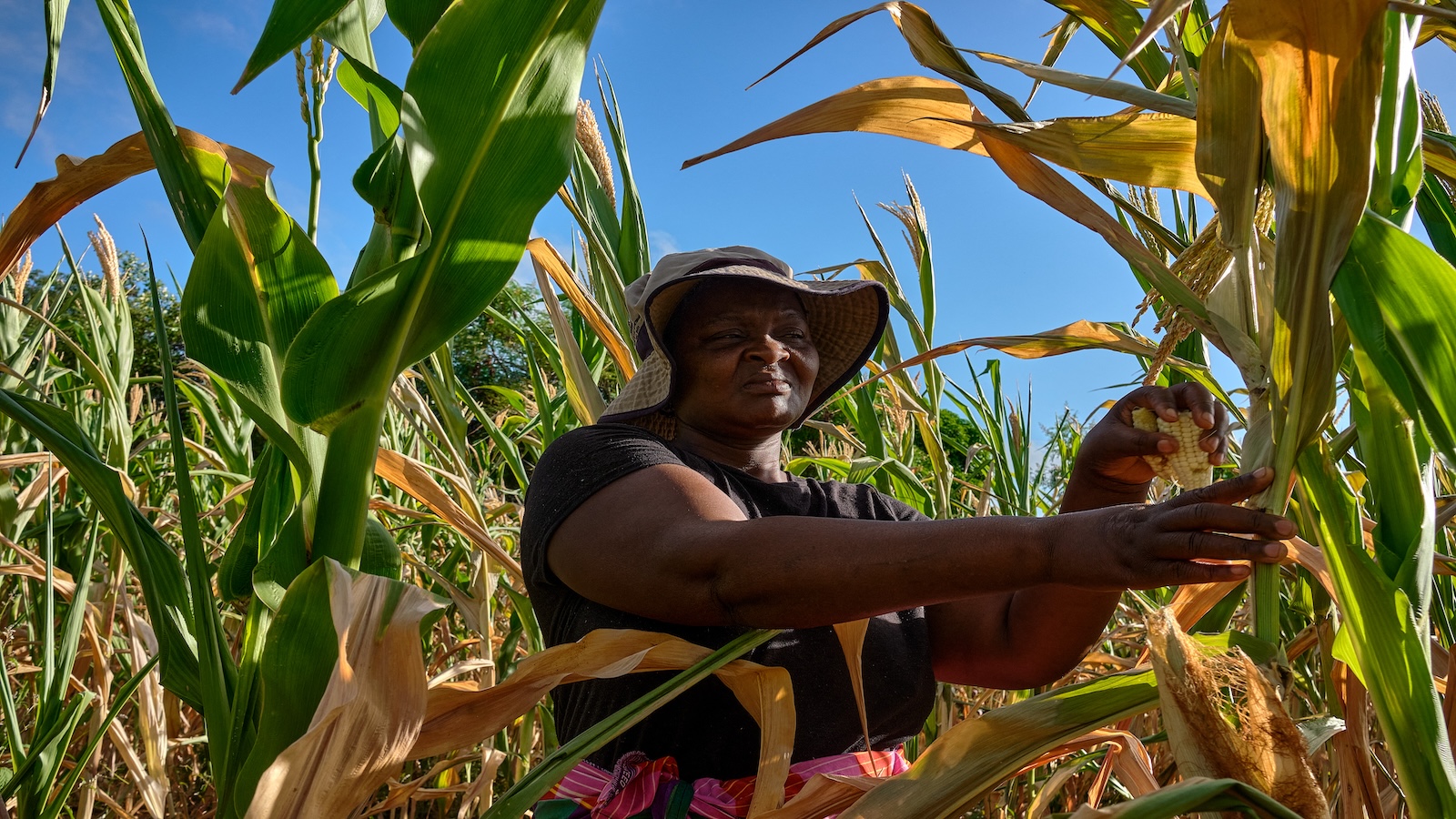The latest annual impact report from the Global Foodbanking Network — a nonprofit that works with regional food banks in more than 50 countries to fight hunger — found that its member organizations provided 1.7 billion meals to more than 40 million people in 2023. According to the nonprofit, this redistribution of food, much of which was recovered from farms or wholesale produce markets, mitigated an estimated 1.8 million metric tons of carbon dioxide equivalent.
These numbers reflect an ongoing, high demand for food banks. Last year, the Global Foodbanking Network, or GFN, served almost as many people as it did in 2020, when the COVID-19 pandemic sent food insecurity soaring. In order to respond to this pressing need in their communities, many of GFN’s member organizations have invested in agricultural recovery, working to rescue food from farmers before it gets thrown out.
Their efforts show how food banks can serve the dual purpose of addressing hunger and protecting the environment. By intercepting perfectly good, edible food before it winds up in the landfill, food banks help mitigate harmful greenhouse gas emissions created by food loss and waste.
“There is always food that is unnecessarily wasted,” said Emily Broad Leib, the founding director of the Food Law and Policy Clinic at Harvard Law School, who has worked with GFN before but was not involved in the recent study. All that unnecessary waste means “there is ongoing need for scaling up food banks and food recovery operations,” Broad Leib added.
A recent analysis from the United Nations Environment Programme estimated that 13 percent of food was lost while it was making its way from producers to retailers in 2022. Subsequently, 19 percent was wasted by retailers, restaurants, and households. The world’s households alone let 1 billion meals go to waste each day. The scope of food wasted around the world has been shockingly high for years: In 2011, the Food and Agricultural Organization, or FAO, of the United Nations released a study that suggested roughly one-third of food produced globally is never eaten.
Food waste at this scale comes with massive planetary impacts. When food goes uneaten, all of the emissions associated with growing, transporting, and processing it are rendered unnecessary. Furthermore, when food rots in landfills, it emits methane, a greenhouse gas that is roughly 80 times more potent than CO2 over a 20-year period. Last year, the Environmental Protection Agency reported that 58 percent of methane emissions from U.S. landfills come from food waste. Globally, food loss and waste have been estimated to be responsible for 8 to 10 percent of greenhouse gas emissions, and reducing them is essential for achieving climate targets.
Food banks can play a special role in that reduction by rescuing more food before it’s lost and redirecting it to people in need.
Christoph Soeder / picture alliance via Getty Images
“Our members have been building out their redistribution capacity,” said Lisa Moon, the president and CEO of GFN. “I think that was our first challenge in the face of this rising need: How do we as an organization capture more supply?”
In order to do this, food banks within GFN member organizations have been coordinating more closely with farmers to redirect surplus food from landfills. GFN defines surplus food as food from commercial streams that was grown for human consumption but that, for some reason or another, cannot be sold. So-called “ugly” produce — misshapen food that never makes it to the grocery store because of its looks — falls into this category.
Some of this redirection actually looks like cutting out food banks as the middleman. Moon gives the example of a food bank that receives a call from a farmer with excess green beans. Instead of traveling to the farm to pick them up, traveling back to the food bank’s distribution hub, storing the green beans, and having folks wait for the next distribution day to collect them, the food bank in question might simply reach out to beneficiaries in the area (think: soup kitchens) to inform them of how many green beans are available and where so they can pick them up. GFN refers to this as “virtual food banking” because of how members are using tech platforms to match farmers with beneficiaries, rather than physically moving the produce themselves.
The result of this emphasis on agricultural recovery is that fruit and vegetables now make up the largest portion — 40 percent — of food redistributed by GFN members by volume. Moon says the organization is “just only scratching the surface” of possibilities for recovering fresh produce.
In order to calculate that 1.8 million metric tons of carbon dioxide equivalent was mitigated by these efforts, GFN utilized the Food Loss and Waste Protocol developed by the World Resources Institute. This framework takes a number of things into account, including where recovered food would have ended up had it not been intercepted from the waste stream. These waste destinations can be landfills but also include animal feed, compost, and anaerobic digesters (a waste management technology that converts organic waste into biogas — but that can come with its own emissions problems). Moon acknowledged that GFN does not know in every case what would happen to the surplus food if it were not rescued by a food bank — but pointed out that most of the places where the network operates do not have a robust circular economy for food.
Broad Leib, the Harvard Law food policy expert, described GFN’s estimate of carbon dioxide equivalent mitigated as “a good proxy for impact.” While other waste destinations are possible, “we also know that the large majority of wasted food globally goes to landfill,” she said. “I think their estimate is likely not far off from actual emissions avoided.”
This story was originally published by Grist with the headline How food banks prevented 1.8 million metric tons of carbon emissions last year on Aug 14, 2024.
Redistributing food before it’s tossed or wasted doesn’t just fight hunger — it also fights climate change. Food and Agriculture, International, Uncategorized Grist









